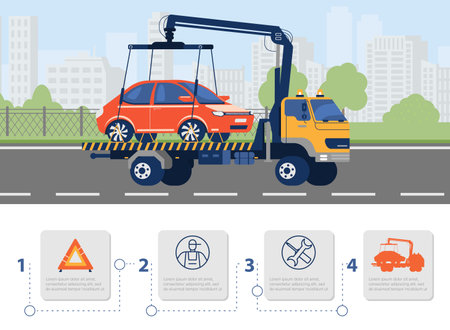Introduction: The Road to Sustainability
In recent years, American drivers have started looking at their cars through a new lens—one that focuses not just on horsepower and handling, but also on how their vehicles impact the planet. With climate change concerns mounting and environmental awareness reaching all-time highs, there’s been a noticeable shift in what consumers expect from automakers. People across the U.S. are now demanding more than just fuel efficiency; they want vehicles made with sustainable materials and eco-friendly manufacturing processes. This growing trend is reshaping the entire automotive industry, pushing manufacturers to rethink everything from interior fabrics to dashboard plastics. As we delve deeper into this topic, we’ll explore how these evolving preferences are accelerating innovation and driving real change in the materials that make up the cars of tomorrow.
2. Consumer Demand: Driving Change from the Drivers Seat
It’s clear that American car buyers are no longer just looking for horsepower or sleek exteriors—they’re increasingly steering the market toward sustainability. Eco-conscious consumers are demanding more than fuel efficiency; they want vehicles built with recycled plastics, responsibly sourced leathers, and renewable materials like bamboo or organic fibers. This shift isn’t limited to a handful of trendsetters—mainstream buyers are now placing environmental impact high on their list of priorities when choosing a new ride.
What Matters Most to U.S. Car Buyers?
| Eco-Friendly Feature | Percentage of Buyers Prioritizing |
|---|---|
| Recycled Materials in Interiors | 54% |
| Low-Emission Manufacturing | 48% |
| Vegan/Alternative Leathers | 41% |
| Sustainable Paints & Coatings | 36% |
The Power of Consumer Voice
This groundswell of green-minded demand is putting real pressure on automakers. Brands that were once known solely for performance or luxury are now racing to showcase their use of plant-based foams, recycled aluminum, and even bio-based plastics. Automakers understand that ignoring this wave could mean losing relevance—and sales—in an evolving market.
A Greener Future on the Horizon
Ultimately, American drivers are taking the wheel when it comes to shaping the future of automotive materials. Their preferences aren’t just influencing what gets stocked on dealer lots—they’re pushing manufacturers to innovate at every stage, from design to delivery. As this momentum builds, expect sustainable materials to become not just an option, but a core part of what defines the American car-buying experience.

3. Material Makeover: From Recycled Plastics to Plant-Based Fabrics
As consumer preferences continue to evolve, automakers are stepping up their game by integrating a new generation of eco-friendly materials into both the cabins and exteriors of vehicles. The shift isn’t just about checking a sustainability box—it’s about delivering tactile, visual, and even olfactory experiences that resonate with drivers who care about the planet. Ford has become a trailblazer by using recycled ocean plastics in components such as wiring harness clips for the Bronco Sport, turning trash into treasure while keeping performance uncompromised. Meanwhile, Tesla and Polestar have reimagined luxury through interiors that incorporate vegan leathers and plant-based textiles, giving drivers that premium feel without the environmental guilt.
The pursuit of sustainability goes beyond plastics—companies like BMW are experimenting with natural fibers like kenaf and hemp for door panels, reducing both weight and carbon footprint. On the more futuristic side, startups such as Bcomp are supplying flax-based composites for racing car interiors that promise strength, lightness, and a dramatically lower environmental impact compared to traditional plastics or metals. Even mainstream brands like Toyota and Hyundai are getting in on the action, incorporating bio-based PET fabrics and sugarcane-derived seat cushions in their latest models.
The real-world benefits go beyond marketing buzzwords; drivers report that these materials often provide a unique tactile warmth and a more inviting atmosphere inside the cabin. Plus, innovations in recycling tech mean that yesterday’s water bottles or fishing nets can literally become tomorrow’s dashboard or floor mats. As this material makeover accelerates, it’s clear that the push from consumers is steering the industry toward an era where sustainability doesn’t mean sacrificing quality or style—but actually enhances the driving experience.
4. Performance Meets Sustainability: No More Compromises
For years, many American drivers associated sustainable car materials with trade-offs—thinking “eco-friendly” meant giving up durability, comfort, or that satisfying behind-the-wheel experience. But todays innovations are turning those assumptions on their head. Automakers are harnessing cutting-edge materials that not only meet but often exceed the expectations of U.S. consumers who demand ruggedness for road trips, plush interiors for daily commutes, and performance that doesnt flinch at the open highway.
Busting the Myths: Green Tech Without Sacrifice
Modern sustainable materials like recycled PET fabrics, plant-based foams, and bio-leather alternatives are engineered to withstand the harshest conditions—think Midwest winters, Southwest heatwaves, and everything in between. These new-age textiles and composites undergo rigorous testing for abrasion resistance, UV stability, and long-term comfort. In fact, many automakers now tout interior warranties and performance metrics that rival or outperform traditional petroleum-based products.
How Do Sustainable Materials Stack Up?
| Feature | Traditional Materials | Sustainable Alternatives |
|---|---|---|
| Durability | High (leather/vinyl) | Equal or higher (bio-leathers, recycled fibers) |
| Comfort | Soft-touch, temp-sensitive | Enhanced breathability, temperature regulation (e.g., bamboo fibers) |
| Performance | Abrasion-resistant, easy clean-up | Stain-resistant coatings, odor control (natural treatments) |
| Eco Impact | Resource-heavy production | Lower carbon footprint, renewable sources |
The Real-World Experience: Behind the Wheel
Americans crave vehicles that match their active lifestyles and values. Whether it’s the tactile feedback of a steering wheel wrapped in vegan leather or seats made from ocean plastics that hold up after years of soccer practice carpools, today’s eco-friendly cabins deliver comfort and resilience without compromise. On the road, these advancements translate into a driving experience where sustainability is seamlessly woven into every mile—no guilt trips necessary.
5. Automakers Response: Shifting Gears in Production
Major automakers are hitting the accelerator when it comes to sustainable car materials, driven by mounting consumer demand and changing regulatory landscapes. Across America, brands like Ford, General Motors, and Tesla are leading the charge, reimagining their supply chains and forging new alliances with innovative start-ups and recyclers. These companies arent just tweaking their existing models—theyre fundamentally rethinking what goes into every vehicle that rolls off the line.
Reinventing the Supply Chain
The heart of this transformation lies in a total overhaul of traditional supply networks. U.S. automakers are investing heavily in sourcing eco-friendly materials such as recycled plastics, plant-based leathers, and responsibly harvested metals. This shift isnt just about optics—its about creating a circular economy where materials at the end of one cars life get reborn in another. For example, Ford’s partnership with suppliers specializing in bio-based foams and seat fabrics showcases how deep these changes run.
Partnering with American Innovation
To stay ahead of the curve, automakers are teaming up with homegrown start-ups pioneering green technology. Companies like GM have inked deals with local firms developing recycled aluminum and closed-loop battery recycling systems. These collaborations bring fresh thinking to legacy brands while fueling job growth and tech innovation right here in the States.
Collaboration with Local Recyclers
Another key move is working hand-in-hand with American recyclers to keep valuable materials out of landfills. By leveraging advanced sorting technology and regional processing hubs, automakers can reclaim plastics, metals, and glass from old vehicles for use in new models. This not only cuts down on waste but also reduces reliance on raw material imports, making production more resilient—and more American—than ever before.
Ultimately, these bold steps signal a clear message: U.S. automakers are fully committed to driving sustainability forward. Their willingness to adapt is reshaping both how cars are made and what consumers expect behind the wheel, paving the way for a greener automotive future built on innovation and responsibility.
6. The Road Ahead: How Far Can Sustainability Go?
The push for sustainable car materials is gathering real momentum, but the road ahead in the U.S. auto market is paved with both promising opportunities and significant challenges. As consumer demand continues to evolve, automakers are navigating a landscape where green innovation isn’t just a nice-to-have—it’s quickly becoming a must.
Accelerating Consumer Expectations
American drivers are increasingly vocal about their desire for eco-friendly vehicles that don’t compromise on performance or style. From recycled plastics to vegan leather interiors, buyers are voting with their wallets for brands that prioritize sustainability. According to recent industry surveys, Gen Z and Millennial consumers, in particular, expect transparency about material sourcing and environmental impact as part of their car-buying journey.
Expert Insights: Barriers to Overcome
Despite this surge in demand, experts point out several hurdles. First, scaling up the production of sustainable materials often comes at a higher cost—a challenge for manufacturers trying to keep vehicles affordable. Second, the infrastructure for sourcing and recycling advanced materials still lags behind in many parts of the country. Third, while many Americans support sustainability in theory, there’s still an educational gap when it comes to understanding what truly makes a car “green.”
Opportunities on the Horizon
The good news? Automakers are investing heavily in R&D to close these gaps. Partnerships with tech startups and material innovators are sparking breakthroughs—from plant-based foams to carbon-negative composites—that could soon become mainstream. There’s also growing governmental support for clean manufacturing initiatives and tax incentives aimed at both producers and consumers.
Shifting Gears: What’s Next?
The future of sustainable car materials will likely be defined by collaboration—between automakers, suppliers, policymakers, and everyday drivers. As more U.S. cities commit to climate goals and stricter emissions regulations loom on the horizon, integrating deeper sustainability into every stage of vehicle design and production is poised to go from trend to industry standard.
Ultimately, American consumers are steering the shift toward greener cars—and as they demand more, the automotive world will have no choice but to follow their lead down this ever-evolving road toward true sustainability.


